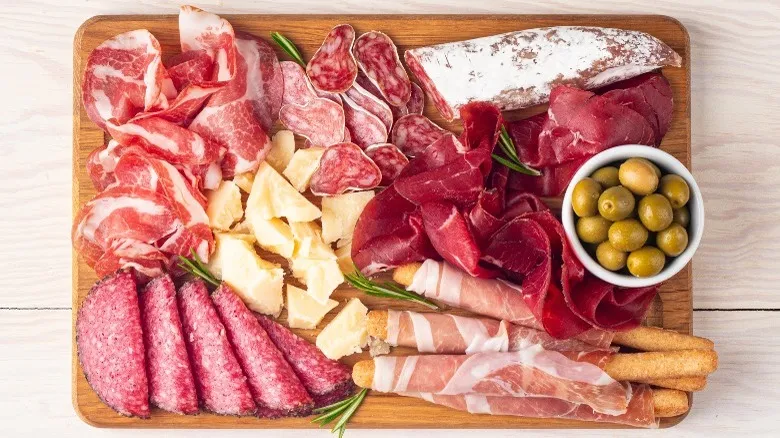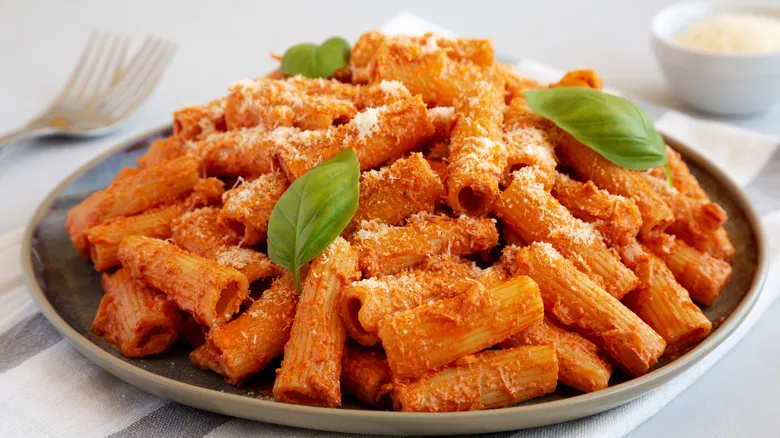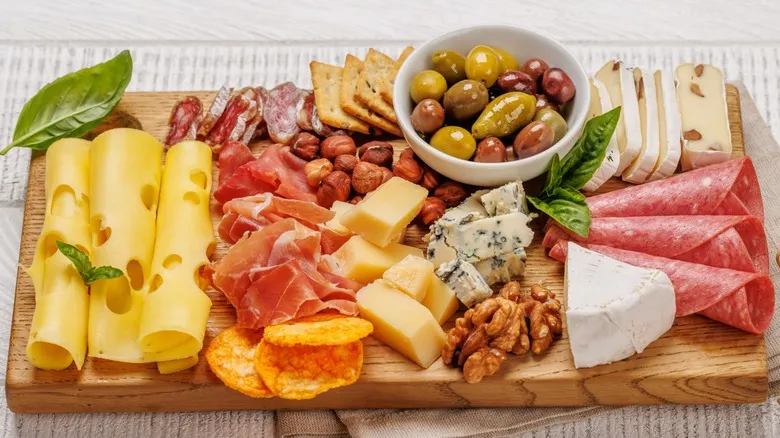Charcuterie focuses on cured meats

Charcuterie, derived from the French words for "cooked flesh" (char meaning "flesh" and cuite meaning "cooked"), dates back to the 15th century when strict regulations prohibited the mixing of raw and cooked meats. French charcutiers, or meat vendors, became experts in the preparation and preservation of cooked meats, laying the foundation for the charcuterie tradition we recognize today. Traditionally, charcuterie featured a variety of cured meats such as ham, pâté, bacon, and sausages, often paired with small portions of bread or cheese to enhance the flavors. The primary focus remained on highlighting the meat, which was prepared through methods like curing, smoking, or drying.
In contemporary times, charcuterie boards have transformed significantly from their traditional French roots. While cured meats still often take center stage, a modern charcuterie board can showcase a diverse selection of cheeses, fruits, nuts, and even sweets, introducing a burst of colors and textures. The art of assembling visually appealing charcuterie boards has become a popular pursuit, with enthusiasts eagerly replacing standard ingredients with gourmet alternatives—such as pickled vegetables, artisanal cheeses, or local honey.
Antipasto is more diverse

In many respects, what we refer to as charcuterie resembles Italian antipasto platters more closely. Antipasto, which translates to "before the meal" in Italian (with antipasti as the plural), has origins that trace back to ancient Rome, where it was served to whet the appetite prior to the main courses. Unlike charcuterie, which primarily focuses on cured meats, antipasto platters feature a broader range of flavors and textures, including Italian meats such as capicola and prosciutto, and often salami, accompanied by cheeses, olives, and marinated vegetables. There are numerous regional variations across Italy, with antipasto platters reflecting local specialties. In coastal regions, seafood is commonly included, while other areas may showcase unique cheeses, meats, or vegetables. Breads also vary by region; for instance, Central Italy often includes crostini, which are small toasted rounds of bread topped with savory spreads.
With components like artisanal breads, fresh fruits, and nuts, antipasto presents a delightful array of flavors. This style of dining remains popular in both Italian restaurants and home settings. Typically served at room temperature, which enhances the flavors of each ingredient, it is an easy and convenient option for entertaining guests. For those in search of a delicious no-cook appetizer, antipasto — or charcuterie, if you prefer — is an excellent choice. It’s straightforward to put together yet offers a wonderful variety of tastes.
Recommended

How Biscuits And Gravy Became The Historic Breakfast Of Appalachia

The Mysterious Origins Of Vodka Pasta Sauce

The Italian Ice Cream Sandwich You Can Also Eat For Breakfast

Why You're Always Told To Drink Ginger Ale When You Have A Stomach Ache
Next up

